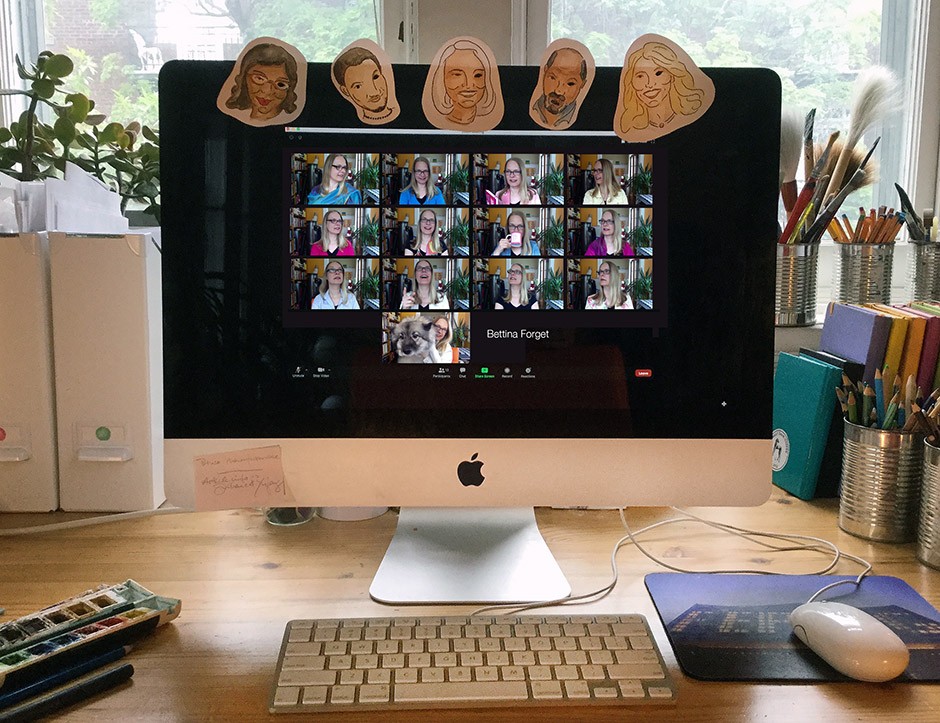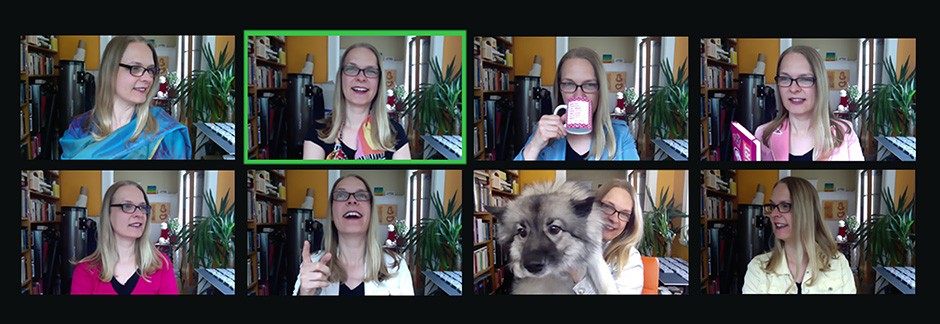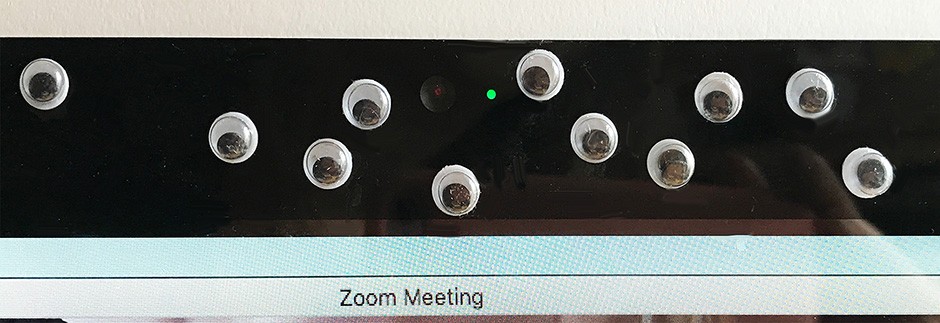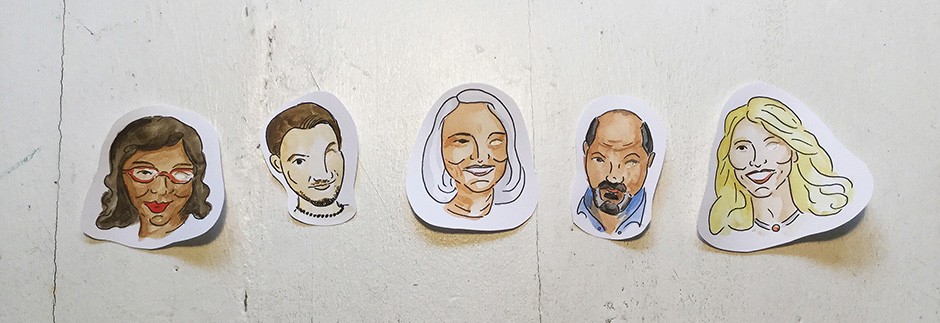Bettina Forget is a doctoral candidate in Art Education. Her research explores the intersection of art and science, and how transdisciplinary education may disrupt gender stereotypes. She owns and directs Visual Voice Gallery, which presents contemporary art that makes a connection to science. She is the Director of the SETI Institute’s Artist-in-Residence Program and VP and Director of Fine Art at the Convergence Initiative. Her creative practice fuses art and astronomy, and her artworks have been exhibited nationally and internationally. Her doctoral research has been funded by the Social Sciences and Humanities Research Council of Canada and a Renata and Michal Hornstein Doctoral Fellowship.

The day the COVID-19 pandemic became real for me was March 16th. I had already closed down my art gallery, stocked up on groceries, and was busy hand-sewing a face mask from an old t-shirt. My plan was to hunker down for a couple of weeks and ride out the storm. However, as I kept scrolling through my news feed, trying to keep up with the avalanche of pandemic stories from around the world, it dawned on me that this was not a mere two-week pause of activities. This was a full stop. We were in for months, not weeks, of social distancing. I stared at the white expanse of my calendar: no appointments, everything was cancelled. I suddenly felt very much alone. A sense of isolation spread over me like an ominous grey cloud.
Then a tiny bright light appeared on the horizon. Invitations to online group chats, book clubs, and drawing sessions popped into my mailbox. It was the beginning of the Age of Zoom. While video conferencing is a mediocre substitute for real-life human contact, these virtual chats proved to be a sufficiently close approximation of face-to-face meetings. I started to feel less anxious about the confinement. I joined the Brady Bunch mosaic, adding my little rectangle to the myriad of conversations that were now taking place online. I must admit that I immensely enjoy the unprecedented views of my friend’s and colleague’s home interiors. I can’t help but laugh when their dogs and cats photo bomb the call, and since I’m a tad nosy, I also surreptitiously try to decipher the books on people’s shelves, looking for tomes we both may have read.
However, as the weeks progressed I felt that something was awry. I couldn’t quite put my finger on it. Then it occurred to me: in all of these lively conversations, we never look each other in the eyes.
In the Zoom environment, proper eye contact is impossible. During video chats, your gaze is typically fixed on the person who is speaking, which means that you are not looking at the camera. As a result, it appears as though you are looking away from the speaker and are not paying attention to what they are saying. However, if you do make an effort to look at the camera, you will not be able to see the person who is talking to you. This means you are missing out on important non-verbal cues that are integral to a conversation, such as gestures, facial expressions and body language. It’s a Catch 22.

Why is this a problem? Eye contact is a vital part of human communication. Making eye contact is a primal reflex, fuelled by an ancient region in our brain, the cerebellum. Researchers recently discovered that the cerebellum allows us to keep our focus on a moving target (say, a saber-toothed tiger or a tennis ball), and that this same region is responsible for maintaining eye contact with others. When we hold someone’s gaze we synchronize with them, even to the extent of harmonizing the speed at which we blink our eyes. The cerebellum triggers our limbic mirror system, the regions in our brain that fire when we move, but also become active when we observe others moving. This mirroring makes it possible for us to connect to our fellow human beings emotionally and is a crucial component in generating empathy with others. On the flip side, research has also demonstrated that the absence of eye contact in social situations can cause someone to feel ostracized and invisible. For humans, social interactions are so essential that we have evolved capabilities to detect even the most subtle cues for inclusion and exclusion.
As an educator, I find the absence of eye contact during online chats especially troubling. Like so many of us, I will be teaching online over the summer months and in the fall semester. I am likely to use Zoom to teach and meet with my students. How will I establish trust and create an emotional connection with my students if it appears as though I look away every time they speak? How will I notice students who are struggling or are losing interest if they are confined to a Zoom rectangle that I am unable to see? How will the students be able to bond with each other as a cohort when they are stuck in their tiny Hollywood Squares?
There is a conversation taking place right now about the quality of university education as we pivot to the digital realm. Since the internet already offers a myriad of online courses, free educational video channels, podcasts, and eBooks, what is the “value added” of an online university course? What can we offer aside from the prestige that is associated with a University’s name or a professor’s reputation? To my mind, the distinguishing factor of on-campus education is the personal connection that develops between students, their professors, and their peers. If this human bond can’t be recreated in the online environment, university courses run the risk of being little more than expensive video feed and online libraries. Therefore, it is important to me that I find ways to address the eye contact conundrum. I have hit the internet and Concordia’s library in search of a solution.

One strategy I found is to use a small, portable teleprompter which can be clipped to the top of a computer monitor. This set-up uses a pair of two-way mirrors: the first mirror is placed right in front of the monitor’s camera or webcam, while the second mirror is tilted at such an angle that the image on the computer screen is reflected up and superimposed onto the first mirror. Now it is possible to look at the camera while seeing the person with whom you are conversing, making it feel like a more natural conversation. This is an ingenious, if pricey hack, adding up to about $500 for the entire set-up. You will also have to reduce the size of the Zoom window considerably to make it fit onto the mirrors, which is not ideal if you have a big class with many faces looking back at you. Still, this is a promising approach. Maybe Concordia’s engineering department could develop a more streamlined solution? My guess is that video conferencing will be a reality for years to come, so an effort to address the eye-contact conundrum would be time well spent.
For a short time, there was a digital solution that promised to address the eye contact issue. FaceTime’s much-anticipated Attention Correction feature (part of the OS13 Beta 5) digitally manipulated your eyes to make them appear as though you were looking at the camera. However, the feature was short-lived. Reviewers found that the technology did not appear to work well, creating an unsettling effect that was counterproductive to the feature’s original intent. That’s a pity, it seemed like an elegant solution.
For a quick fix that requires no technology of any kind, you may simply try to sit further away from the computer, effectively flattening the angle between your camera, your eyes, and the Zoom window. While this option works reasonably well, it means that you now appear fairly small in your picture frame, making you look uninterested and remote. If you are using a webcam, you could compensate by using its zoom function. However, for those of us using the monitor’s built-in camera, this option is not available. It’s ironic: you can’t zoom in when you are using Zoom.

Of course, the most obvious solution is to train yourself to look at the camera when you are communicating online. I must admit that I find it unnerving to focus on the tiny luminous green dot at the top of my iMac. It feels as though I’m speaking to the HAL 9000 from 2001 Space Odyssey rather than to a real human being. In response, I decided to draw on my artistic skills. I have sketched the faces of the people with whom I chat most regularly on Zoom, cut them out, and stuck them at the top of the monitor during video calls. I added a tiny hole in one of the eyes of each face, which is then placed right on top of the camera. This little trick helps me to maintain my gaze with the camera and beaks my urge to focus on the computer screen during conversations. If you don’t trust your drawing skills, you may try cutting out a photo instead. I have even seen someone stick googly eyes next to their computer camera, and apparently even this minimal cue is enough to help you to create your virtual eye contact.
All of us will have to adapt to the new normal of connecting to each other via video conferencing. Making sure that we create human connections is especially crucial for educators who are now teaching remotely. Going forward, we will require new social protocols, additional training, and possibly some new technologies. Let’s come up with creative solutions to optimize our online communications. For many, me included, it’s what's keeping us sane during these COVID times.
If you have any other video hacks, I’d love to hear them via @BettinaForget.
About the author



